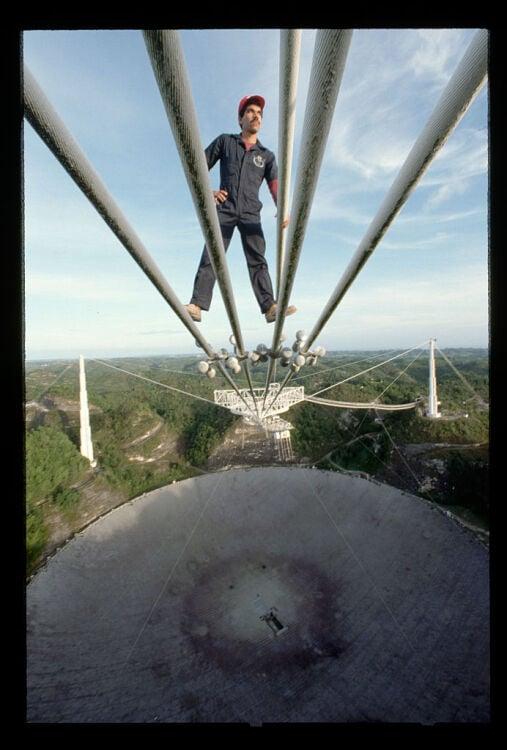The mysterious collapse of a giant telescope in Puerto Rico has left many scientists scratching their heads as they try to unravel the cause of the unprecedented event. The Arecibo Observatory, a renowned radio telescope, succumbed to its own weight and structural instability on December 1st, 2020, after over 50 years of groundbreaking research and discovery. While initial reports pointed to natural wear and tear as the likely culprit, new evidence suggests that the telescope’s own powerful radiation emissions may have played a significant role in its downfall.
The Arecibo Observatory was known for its powerful radar capabilities, which allowed it to track asteroids, map distant planets, and even search for extraterrestrial life. However, the very radiation it emitted for these purposes may have contributed to the deterioration of the telescope’s supporting cables and structures over time. This theory is supported by research that shows how the intense energy released by the telescope’s transmissions could have weakened its components and caused them to fail under the immense strain.
Moreover, the telescope’s massive 900-ton instrument platform, suspended 450 feet above the dish, placed significant stress on the cables and towers supporting it. The constant movement and vibrations caused by the telescope’s operations only added to the strain on these critical structures, leading to their eventual collapse. When the main cable holding up the platform snapped in August 2020, it was clear that the telescope’s fate was sealed, as subsequent inspections revealed further damage and potential points of failure.
While the collapse of the Arecibo Observatory is a devastating blow to the scientific community and a loss of a valuable research facility, it also serves as a cautionary tale about the importance of responsible engineering and maintenance practices. The overreliance on a single structure for groundbreaking research without considering the long-term implications of its operations can have unintended consequences, as evidenced by the tragic fate of the telescope in Puerto Rico.
Moving forward, it is crucial for scientists and engineers to learn from the mistakes made with the Arecibo Observatory and take proactive steps to prevent similar disasters in the future. This includes regular inspections, maintenance, and upgrades to existing facilities, as well as diversifying research efforts to reduce the strain on any one telescope or instrument. By prioritizing safety and sustainability in scientific endeavors, we can ensure that the legacy of the Arecibo Observatory lives on in the pursuit of knowledge and discovery.
while the exact cause of the Arecibo Observatory’s collapse may never be fully understood, the role of its own powerful radiation emissions cannot be overlooked. The tragedy serves as a stark reminder of the importance of responsible engineering practices and the need for constant vigilance in maintaining scientific facilities. As we mourn the loss of this iconic telescope, let us also use it as an opportunity to improve and innovate in our pursuit of understanding the universe around us.

